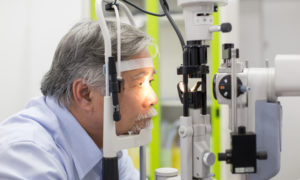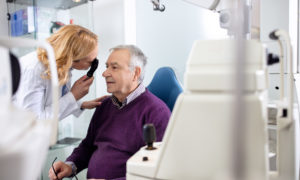By Mark Wright, OD, FCOVD,
and Carole Burns, OD, FCOVD

May 2, 2018
Fundus photography is an essential diagnostic tool that enhances care. It also can boost your practice’s profitability. Here are the top ways you can improve your coding for use of this instrument to increase your reimbursements.
Fundus photography is a common code used with patients. Let’s make sure we know the rules for using this code.
Fundus photography is reported with CPT code 92250. It is a bilateral code. The images may be either photographic or digital. The images become part of the patient’s medical record.
Because payer policies can differ widely on this code, be sure to read each carrier’s NCD/LCD (national coverage determination/local coverage determination) for 92250. Most of the time you can find these online. If you have difficulty finding them, then contact the carrier directly. The carrier’s NCD/LCD determinations should contain all of the diagnosis codes that permit payment of this code.

Click HERE, or the image above, to read about the new coding and billing rules for 2018.
The ability to bill this code, and have the carrier pay for it, starts with medical necessity. You are on the strongest ground to bill this code when there is a specific problem you are documenting (e.g.: retinal hole), but, some insurers will permit this code when there are disease processes that warrant the medical necessity of retinal photos in the absence of a specific fundus problem (e.g.: Aetna covers this service for patients whose visual evoked potential test is abnormal).
There are two keys to when you can bill a fundus photo in the absence of a specific problem: (1) the carrier NCD/LCD supports this, and, (2) the test must be used in the medical decision-making for the patient. Both conditions must be met, and the use of the test in the medical decision making process must be clearly documented in the patient’s record.
Most carriers permit the use of this code multiple times during the course of a year when you are documenting a change (e.g.: diabetic retinopathy that is changing). Rarely do carriers permit the use of this code more than one time per year in slowly changing chronic conditions (e.g.: controlled POAG). The carrier’s NCD/LCD is the key to understanding how often you can bill and get paid.
An important point is just because a carrier will not cover a test does not mean that you cannot run the test and have the patient pay for it out of pocket. If you do this, make sure to have the patient sign an Advance Beneficiary Notice of Noncoverage (ABN).
Since the definition of 92250 is fundus photography with interpretation and report, that means interpretation and report is a required part of documentation for this code. The report is a separate report. A common mistake is to think that the report is actually part of the exam findings. It is not. It is part of the patient’s medical record, but it is a separate report in the medical record. The content of the report should include the following information:
• Clinical Findings
o What did you do?
o What did you find?
o Test reliability (Reliable or Unreliable)
• Interpretation Your interpretation of the clinical findings
• Comparative Data
o First test ever done on this patient
o Improved
o Stable
o Worsening
• Clinical Management
This explains how the test results affect the management of the patient’s condition going forward. Based on this test, the patient’s Clinical Management will …
o Remain the same
o Be changed
Documentation rules require that any time you identify a test result as unreliable, a problem as worsening, or a change in clinical management, you must further describe the situation in words or pictures.
The Correct Coding Initiative (CCI) does not have any bundles limiting the use of either CPT codes 92002-92014 or CPT codes 99201-99215 with the fundus photography code, so you can bill both your exam and 92250 on the same day and get paid. Make sure you have a medical order for the test in your documentation (e.g.: The presence of ___ triggered the medical necessity for ordering fundus photography from ___ on ___ date, at ___ time).
One thing to note is that the use of 92250 with 92133 (Scanning computerized ophthalmic diagnostic imaging, posterior segment, with interpretation and report, unilateral or bilateral; optic nerve) on the same day has rules that need to be followed.
“CCI bundles 92133 and 92250 with a “1” modifier indicator, which indicates you may separately report them, when appropriate, using a modifier such as 59. For example, you can use modifier 59 (Distinct procedural service) when the physician performs the services on different eyes or for conditions that warrant both on the same eye, such as hemangioma (D18.09). Clear documentation is essential in the event of a payer review.”
As always, follow the rules … but that means you need to spend time learning the rules. Take this week to learn the rules for 92250, and make sure your office protocols are following the rules for this code.
References
i. https://www.supercoder.com/coding-newsletters/my-ophthalmology-coding-alert/imaging-know-these-5-facts-about-fundus-photography-coding-157044-article
ii. https://www.medicare.gov/claims-and-appeals/medicare-rights/abn/advance-notice-of-noncoverage.html
iii. https://www.supercoder.com/coding-newsletters/my-ophthalmology-coding-alert/imaging-know-these-5-facts-about-fundus-photography-coding-157044-article



























